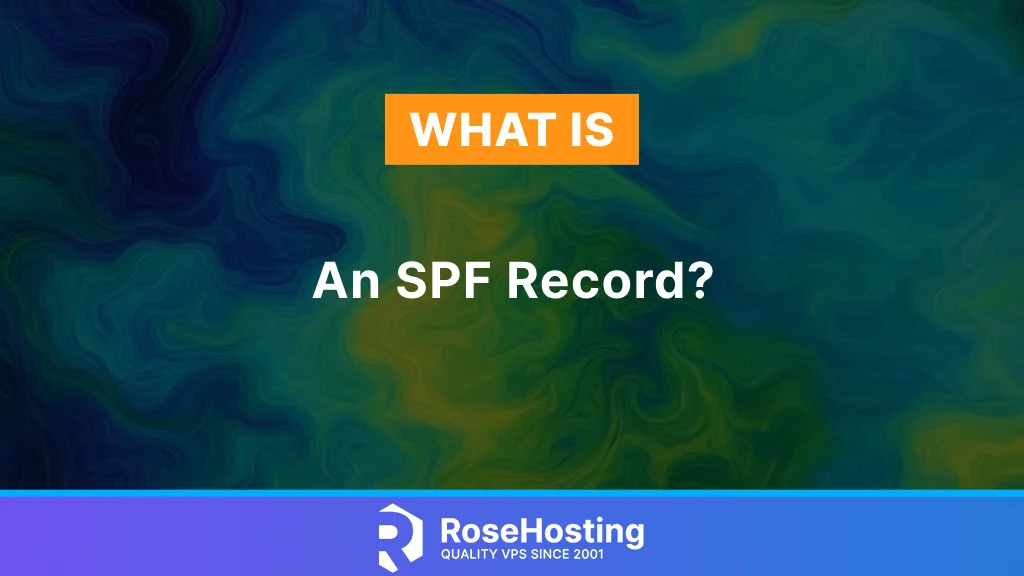
SPF or Sender Policy Framework is a DNS record that indicates mail exchanges in which hosts are authorized to send mail for a domain. An SPF record is a type of TXT(text), and its purpose includes essential notices regarding the domain. They are used because the SMTP protocol does not authenticate the “from” address in an email. Without it, attackers may easily impersonate the sender’s email address. This works so that the attackers or spammers can edit the From address to make it look like they are sending from an email address to your domain. This action is also known as email spoofing, which uses the user’s private information and can decrease the reputation of the IP address where the domain is pointed, which may lead to blocking. That is why using the SPF record is crucial when configuring the domain.
The SPF record can be managed via the domain’s DNS zone. This information is mostly handled by system administrators who have access to the user’s domain’s DNS zone. The SPF record has its format, mechanisms, and modifiers, which will be explained in more detail in the next paragraphs.
Table of Contents
The SPF record format
SPF record formatting is straightforward, containing only one line of string or text. The format is as follows:
v=spf1 a mx ip4:"IP address Here" ip4:"IP address Here" include:"Sender Domain Here" ~all
Let’s explain all components individually:
v=spf1: The SPF record always starts with the v element and indicates that it is used for that domain. The assignment spf1 is the most common version of the SPF for mail exchanges.
ipv4: Then is the list of the authorized IP addresses that can send emails on behalf of the domain. The list can contain one or more IP addresses.
Include: “Sender Domain Here” is an example of an include tag telling the server that third-party organizations are authorized to send emails on behalf of the domain. This means the domain’s IP addresses should be checked and considered authorized. The list can contain multiple domains, and the tag will only work for valid domains.
~all: This option marks all unlisted emails with IP addresses OR domains as insecure, and the emails they send will be considered spam messages. If the option was +all, it indicated that any server could send emails on behalf of the domain.
SPF Mechanisms
SPF mechanism is a tag defined in the SPF record format that tells the destination server which emails should be considered valid and how to deal with them. We will explain all SPF mechanisms in the following paragraphs:
ip4: Is the range of authorized IPv4 addresses considered valid by the destination server. If the subnet is not defined it is considered as /32 by default.
ip6: Is the range of authorized IPv6 addresses considered valid by the destination server. If the subnet is not defined it is considered as /128 by default.
A: Defines a domain name with A or AAAA record and is considered valid if the A record points to the IP address of the sender’s server.
MX: The MX record authorizes the sender with the IP address that matches the MX’s defined IP address. The sender can send emails only if the domain’s MX record contains the IP address that matches the sender’s IP.
PTR Or DNS Pointer Record defines the authorized domain using a PTR record that resolves the IP address to the sender’s domain. The destination server checks the sender’s IP address to find any domains associated with it.
EXISTS: The existing SPF mechanism searches the A record of the provided domain. A valid A record is considered a successful match.
INCLUDE: The include mechanism authorizes third-party email senders by specifying their domains. A sender is authorized when its IP address matches the IP address of the domain defined in the SPF record.
ALL: This is the last mechanism defined in the SPF record. Any mechanisms after this record are ignored. -all reject all emails with IP addresses or domains not listed in the SPF record.
SPF Modifiers
The SPF modifiers consist of names or value pairs separated by the “=” symbol, rules exceptions, changing default options, and pointing out additional information. The modifiers only appear once in the SPF record and are always at the end of it. The unknown modifiers are ignored.
The redirect modifier directs to other SPF records for authentication and is used when multiple domains have the same SPF record content. It is ignored only if all mechanisms are included in the SPF record.
The exp modifier explains why the destination server returned Fail SPF Qualifier even though the mechanisms were matched.
Why is the SPF record important?
Using an SPF record is very important for one domain. It prevents phishing attacks, email spoofing, and spam emails. It improves email deliverability, and domains with SPF can not be marked as spam or bounced back to the sender. The last advantage of using it is that it makes the emails DMARC-compliant. DMARC is an email validation system that ensures authorized users only send emails. The DMARC decides if the email will be considered SPAM, rejected, or delivered successfully.
That’s it. You learned some vital information about the SPF record. Of course, if you have an issue configuring an SPF record for your domain, you can always contact our technical support, and our admins will help you immediately. All you have to do is sign up for one of our NVMe Linux VPS hosting plans and use our DNS nameservers for your domain. That way, we can manage your domain’s DNS zone. Do not hesitate to contact us anytime you want. We are available 24/7.
If you liked this post, please share it with your friends or leave a comment below.